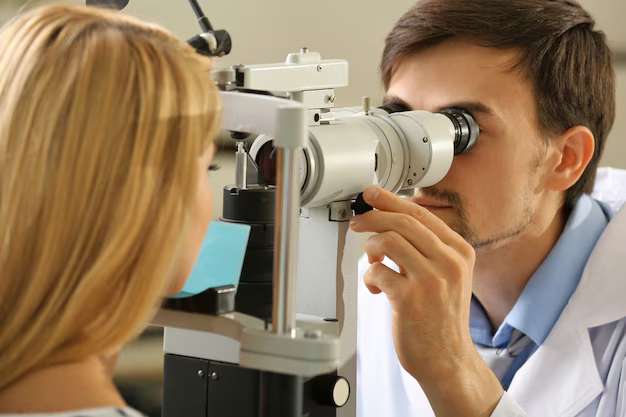Understanding Eye Cataracts: What You Need to Know
When we think about common eye conditions that affect millions worldwide, eye cataracts often come to mind. But what exactly is a cataract, and how does it impact our vision? Exploring this condition can illuminate the pathway to better eye health and prepare you to approach it with confidence and knowledge.
What Are Cataracts?
Cataracts refer to the clouding of the eye's natural lens, which lies behind the iris and the pupil. This condition is a leading cause of vision issues, particularly among older adults. Although cataracts can affect anyone, they are most commonly associated with aging.
How Cataracts Develop
Cataracts develop when proteins in the eye's lens begin to clump together, resulting in cloudiness that obstructs light from passing clearly through the lens. This obstruction can make vision appear blurry or hazy, similar to looking through a fogged-up window.
Types of Cataracts
Understanding the different types of cataracts can provide insight into their varying impacts:
- Nuclear Cataracts: These form deep in the central zone (nucleus) of the lens and are often linked to aging.
- Cortical Cataracts: Affecting the edges of the lens, these cataracts create white, wedge-like opacities that grow inward.
- Subcapsular Cataracts: Occurring at the back of the lens, these can develop more rapidly and are more common in individuals with diabetes, high steroid use, or extreme nearsightedness.
Symptoms and Signs
Recognizing the early symptoms of cataracts can prompt timely action:
- Blurry Vision: Objects appear clouded or fuzzy.
- Sensitivity to Light: Bright lights or glare can become bothersome.
- Difficulty Seeing at Night: Low-light conditions exacerbate vision problems.
- Faded Colors: Colors may not appear as bright or clear.
- Frequent Prescription Changes: Frequent updates to eyeglass or contact lens prescriptions.
These symptoms can vary depending on the cataract's type and progression. Monitoring any changes in vision is crucial for early detection and management.
Causes and Risk Factors
While aging is the most common cause, several factors can increase the risk of developing cataracts:
- Genetics: A family history of cataracts can increase susceptibility.
- Diabetes: This condition is known to accelerate cataract formation.
- Previous Eye Injuries: Trauma to the eye can trigger cataract development.
- Prolonged Use of Steroids: High doses over time can lead to cataract formation.
- Excessive UV Exposure: Prolonged exposure to sunlight without protection can contribute to lens damage.
Proactive measures, such as wearing UV-protected sunglasses and managing health conditions like diabetes, can play a role in reducing risk.
Diagnosis: What to Expect
If you suspect cataracts, a comprehensive eye examination is the first step. An optometrist or ophthalmologist will conduct several tests to diagnose cataracts:
- Visual Acuity Test: Measures how well you see at various distances.
- Slit-Lamp Examination: Allows the doctor to examine the structures at the front of the eye, including the lens.
- Retinal Exam: Provides a detailed look at the retina at the back of the eye to check for other possible vision issues.
Treatment Options
Managing cataracts begins with adjustments in lifestyle and progresses to surgical intervention if necessary.
Lifestyle Changes and Management
In the early stages, stronger lighting, anti-glare sunglasses, or magnifying lenses can enhance vision clarity. Monitoring vision and maintaining regular eye check-ups ensure any changes are tracked.
Cataract Surgery
When cataracts significantly impair vision and daily activities, surgery is considered. This common and typically safe procedure involves removing the clouded lens and replacing it with an artificial intraocular lens (IOL).
Key Surgical Facts:
- Primarily outpatient with swift recovery.
- Most individuals experience improved vision rapidly post-surgery.
- Discussing IOL options with your surgeon helps tailor outcomes to your vision needs.
Living with Cataracts
Living with cataracts doesn't mean surrendering to poor vision. By adopting certain practices, you can maintain an active, vibrant lifestyle.
Tips for Daily Life
- Regular Eye Exams: Keep track of eye health changes and seek timely intervention.
- Good Lighting: Enhance home and workplace lighting to reduce strain.
- Healthy Diet: Nutrient-rich foods containing antioxidants like lutein and zeaxanthin can support eye health.
- Vision Aids: Use assistive devices that enhance reading or detail-oriented tasks.
Emotional and Social Well-being
Cataracts can impact emotional health, especially if they restrict cherished activities. Connecting with support groups or counseling services can combat feelings of isolation or frustration, empowering individuals to live fully.
Prevention: Protecting Your Vision
While not all cataracts are preventable, certain strategies can minimize risk:
- Shield eyes from harmful UV rays with sunglasses.
- Avoid smoking, which can accelerate lens aging.
- Manage systemic health conditions, particularly diabetes.
- Maintain a balanced diet rich in vitamins C and E.
Remember: Proactive eye care champions long-term vision health.
Key Takeaways
👉 Early Detection: Regular eye exams help identify cataracts and enable early intervention. 👉 Understand Symptoms: Recognizing early signs can prevent progression to debilitating stages. 👉 Consider Treatment Options: Lifestyle adjustments might suffice initially, with surgery as a potential long-term solution. 👉 Embrace Prevention: Protective strategies empower proactive eye health management.
Ultimately, knowledge about cataracts can transform personal eye care. Staying informed about symptoms, risks, and treatment options ensures that vision remains as clear and vibrant as possible, enriching life experiences now and for years to come.
